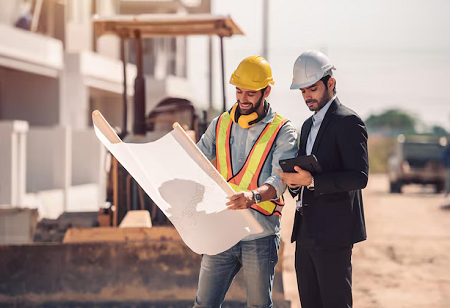
The towering Tapei 101, which was once the tallest skyscraper in the world emerged unscathed in the wake of Taiwan’s most powerful earthquake in the last 25 years. This showcased the pinnacle of modern engineering against several natural disasters. The 7.4 magnitude earthquake that struck Taiwan killed at least 9 people & damaged 770 buildings. This disaster tested Taiwan’s preparedness as well as architectural resilience particularly in the capital which was located a mere eighty miles away from the epicenter. Taipei 101’s slight sway during this natural disaster is a feature and not a flaw of its design.
Earthquake resistant design is one of the most crucial aspects of structural engineering, which is developed for safeguarding lives and decreasing property damage during seismic events. By incorporating numerous scientific advancements as well as lessons that were learned from the past, the principles & practices of earthquake-resistant design has evolved to a greater extent. In this article let us look at the numerous strategies, methodologies as well as technologies used in earthquake-resistant design and how have these contributed for the safety as well as resilience of structures. Some of the technological advances in earthquake-resistant design include:
Advanced materials: Earthquake-resistant design has revolutionized the development of high-performance materials which include high strength concrete & fibre reinforced polymers. Superior strength, energy absorption capabilities as well as ductility are some of the important features offered by advanced materials when compared to conventional construction materials.
“India’s structural engineering services market is witnessing a remarkable surge, propelled by factors driving private and public sector development initiatives. As cities expand and non-metro areas integrate into urban conglomerations, the need for structural engineering services has become paramount,” says Zawareh H. Wadia, Founder of the firm - Zawareh H. Wadia & Structural Engineering Consultant.
“The current landscape is shaped by the imperative need for infrastructure development across various sectors, including transportation, commercial, and residential,” he adds.
Seismic dampers: some of the seismic dampers such as the friction dampers, viscous fluid dampers as well as tuned mass dampers are devices which are installed in buildings for absorbing and dissipating seismic energy. These help in decreasing the amplitude of vibrations & improving the damping capacity of the structure which results in enhancing its seismic resilience.
One of the tallest structures in the world – the Tokyo Skytree incorporates advanced seismic design techniques. This structure features a central column designed for counteract swaying as well as dampers which absorb seismic energy. One of the main reasons for using this design in the structure is to ensure it can withstand seismic events which are common in the land of Japan.
Smart Structures: For monitoring & responding to the seismic activity in real-time, smart structures use actuators, control systems and sensors. Structural health monitoring systems help in detecting damage or even unusual stress patterns which allow for repairs & timely maintenance. During an earthquake the semi-active & active control systems can adjust the stiffness as well as damping properties of the structures dynamically.
The Burj Khalifa in Dubai incorporates seismic design principles owing to the slenderness and height, although it is not in a high seismic zone. The building’s y-shaped cross-section not only renders stability but it also reduces wind & seismic forces. Also, the robust foundation system coupled with high-performance concrete improves seismic resilience.
Performance-based design: PBD is an approach that mainly focuses on achieving specific performance objectives under numerous seismic scenarios. Performance-based design facilitates engineers for using innovative solutions as well as advanced analysis techniques for meeting performance goals, unlike other prescriptive design codes. These include ensuring continued functionality post an earthquake or limiting damage to either non-structural components.
Post the 1989 Loma Prieta earthquake, the eastern span of the Bay Bridge was redesigned and built again with an objective of enhancing its earthquake resilience. The new design comprises features such as self-anchored suspension system as well as seismic isolation bearings which allows the bearings to withstand significant seismic activity.
The Future directions in the earthquake-resistant design would involve the following such as:
Enhanced Computational Models: the implementation of advanced computational models as well as simulations can help in enhancing the accuracy of seismic performance predictions. Finite element analysis as well as various other sophisticated modeling techniques helps engineers in studying the complex behaviors of structures under seismic loads.
Some of the top structural engineering firms include Arup, Stantec Inc., VINCI, Arcadis, Atkins and others.
Interdisciplinary approaches: Integrating knowledge from data science, seismology & material science can result in more effective as well as innovative solutions. For example, ML algorithms can analyze huge amounts of seismic data for identifying patterns and enhancing design practices.
Resilient Infrastructure: It is crucial to emphasize the resilience of infrastructure which includes the transportation networks, & utilities. Also, earthquake-resistant design must not just focus on standalone buildings but they should also focus on ensuring the functionality of critical infrastructure either during an earthquake or after the earthquake.
“Infrastructure development sector has emerged as the key contributor to the growth of Indian economy. The new investments for industrialization and massive infrastructure investments in country are responsible for fuelling the growth of Structural Engineering services,” says Sami Kampali, Director.
Balancing earthquake resistance along with sustainability is becoming highly important and the implementation of sustainable materials as well as construction practices can decrease the environmental impact of earthquake-resistant design. Continuous research, interdisciplinary collaboration as well as innovation are crucial to address the challenges as well as future needs in this industry and we should ensure that the built environment is safe and resilient during the earthquakes.
We use cookies to ensure you get the best experience on our website. Read more...